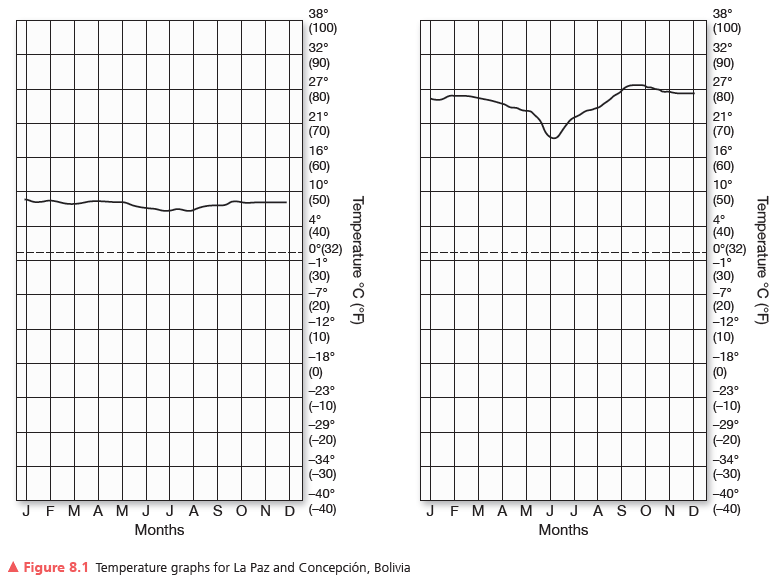Kinetic energy refers to
A) the energy an object possesses by virtue of its elevation above a surface.
B) the energy an object possesses because of its gravitational attraction to other objects.
C) the energy an object possesses in accordance with the law E = .
D) the energy an object possesses by virtue of its motion.
D
You might also like to view...
Recall that the normal lapse rate of temperature change with altitude is 6.4 C°/1000 m, or 3.5 F°/1000 ft. Calculate the difference in elevation between La Paz and Concepción and calculate what the difference in their mean (average) annual temperatures should be, based on cooling at the normal lapse rate. Is the actual difference between the mean annual temperatures for these two cities higher, lower, or the same as that produced by calculating average normal lapse rate conditions?

Which of the following operations can be accomplished by non-topological editing?
A. merge features B. union features C. buffer features D. all of the above E. only merge features and union features
Geologists know that radioactive dating methods are valid
A) because they are consistent with proposed theories. B) because they have been compared with dates determined by other methods and have been found to correlate well. C) because they have been compared with dates determined by other methods and have the same exact dates. D) because the instruments always work well when performing laboratory tests.
What role does heat play in creating new minerals or new crystalline structures in metamorphic rocks?
What will be an ideal response?